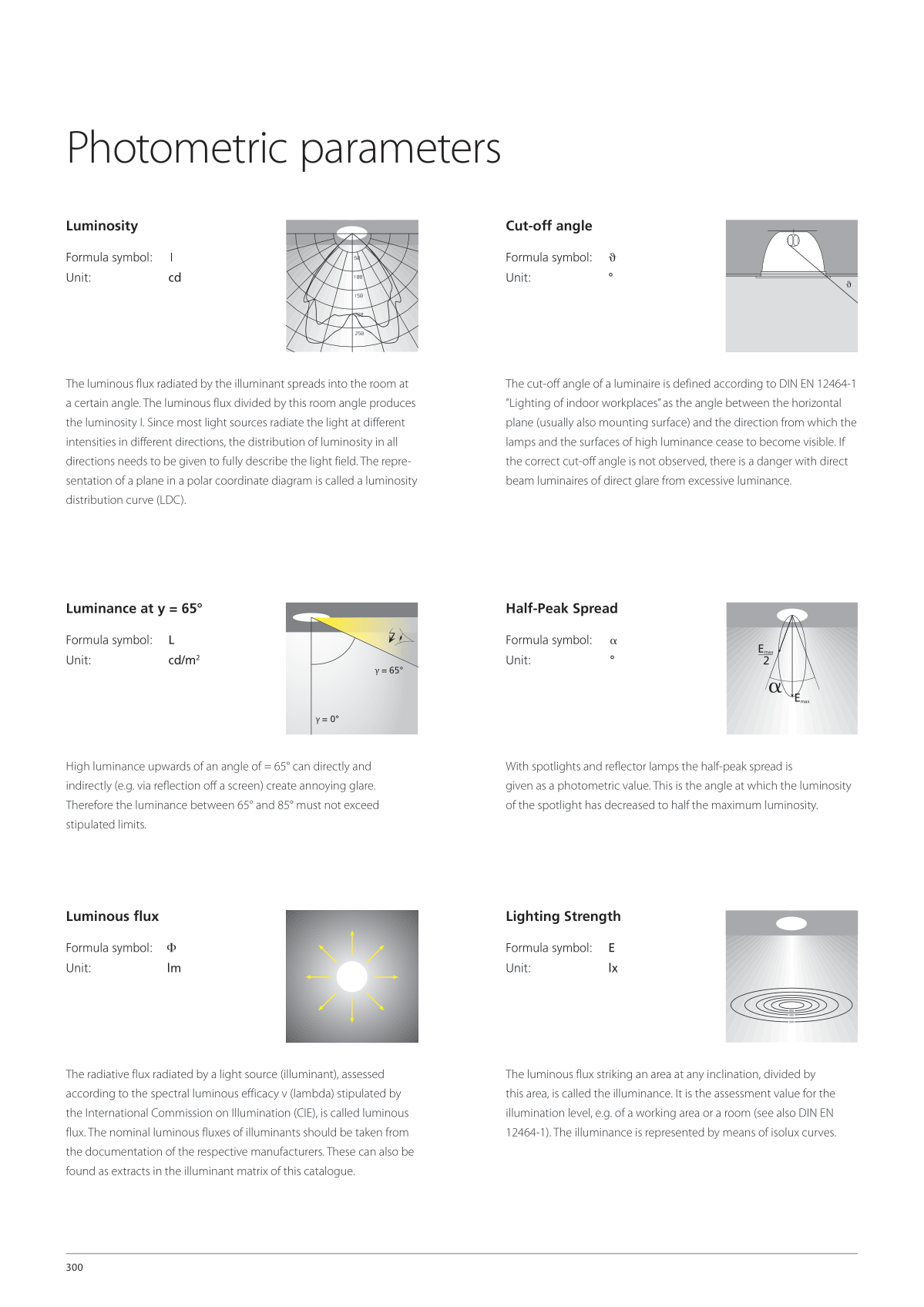300
γ = 65°
γ = 0°
15°
γ = 0°
γ = 65°
q
Emax
2
Emax
Photometric parameters
Luminous flux
Formula symbol: F
Unit:
lm
The radiative flux radiated by a light source (illuminant), assessed
according to the spectral luminous efficacy v (lambda) stipulated by
the International Commission on Illumination (CIE), is called luminous
flux. The nominal luminous fluxes of illuminants should be taken from
the documentation of the respective manufacturers. These can also be
found as extracts in the illuminant matrix of this catalogue.
Luminosity
Formula symbol: I
Unit:
cd
The luminous flux radiated by the illuminant spreads into the room at
a certain angle. The luminous flux divided by this room angle produces
the luminosity I. Since most light sources radiate the light at different
intensities in different directions, the distribution of luminosity in all
directions needs to be given to fully describe the light field. The repre-
sentation of a plane in a polar coordinate diagram is called a luminosity
distribution curve (LDC).
Lighting Strength
Formula symbol:
E
Unit:
lx
The luminous flux striking an area at any inclination, divided by
this area, is called the illuminance. It is the assessment value for the
illumination level, e.g. of a working area or a room (see also DIN EN
12464-1). The illuminance is represented by means of isolux curves.
Half-Peak Spread
Formula symbol: a
Unit:
°
With spotlights and reflector lamps the half-peak spread is
given as a photometric value. This is the angle at which the luminosity
of the spotlight has decreased to half the maximum luminosity.
Luminance at y = 65°
Formula symbol:
L
Unit:
cd/m2
High luminance upwards of an angle of = 65° can directly and
indirectly (e.g. via refection of a screen) create annoying glare.
Therefore the luminance between 65° and 85° must not exceed
stipulated limits.
Cut-off angle
Formula symbol: q
Unit:
°
The cut-off angle of a luminaire is defined according to DIN EN 12464-1
”Lighting of indoor workplaces” as the angle between the horizontal
plane (usually also mounting surface) and the direction from which the
lamps and the surfaces of high luminance cease to become visible. If
the correct cut-off angle is not observed, there is a danger with direct
beam luminaires of direct glare from excessive luminance.


